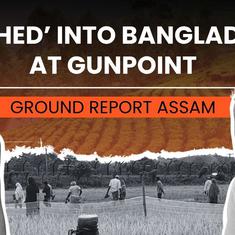I arrived at the gates of the great Mehrangarh Fort in Jodhpur in 2008, never having heard a single live performance of Indian folk music in my life. From the moment I entered that fort, my life became a whirl of desert songs and stories, hereditary musicians, singing genealogists, temple drummers, farmer-flautists and all-night jagrans, or vigils.
I knew that something tremendous had happened to me when I was listening to Sardar Khan Langa rehearsing in the artists’ hostel. His voice was so powerful, so packed with energy and tragedy, that I found myself weeping uncontrollably. My initial reaction was defensive: "Get out of my soul", I seemed to be feeling, "you have no right to speak so frankly to my heart." But as he continued, I let the sound hurt then heal, and that was it. I was addicted.
I worked for three editions of the festival, then later I created my own small company that introduces travelers, filmmakers and musicians to the cultural riches of rural India through trips into the villages where the best artists live. I wanted to share that indescribable emotion I had felt.
I’m now exploring the rural music of Assam and West Bengal as well, but the Rajasthani voices stand out as the best artists I encountered. The first three tracks were recorded at Morchang Studios, another initiative of the Jaipur Virasat Foundation, the organisation behind the Jodhpur RIFF. The last two are recorded at the musician’s home.
Sumitra Das Goswami
Sumitra and I worked together on a project known as Dharohar. It was an experiment by JVF to get artists from various communities to collaborate on ten tracks. The project was facilitated by the extraordinary UK sound artists and beatboxer Jason Singh.
Sumitra and the gang were spotted by iTunes and invited to London to perform with Mumford and Sons and Laura Marling, which was fun. But I like her best singing here with her sister-in-law in Morchang studios. She’s got a terrific voice and a formidable personality.
She treated me something like a little sister when I first met her, and I would help her in the dressing room by passing safety pins and admiring her saris. I remember us laughing as she and the UK singer-song-writer Bex Mather stood next to each other at a large mirror back stage, one applying bronzer and the other applying whitening lotion.
Munshi Khan
Munshi was the most beautiful character with the most astonishing voice. In this video he is just warming up, enjoying hearing his voice expanded with the delay, and showing off a bit. It’s an extraordinary recording, and one that I’m very glad that Nick and Adi from Morchang studios were clever enough to catch.
Tragically, in 2011, Munshi was killed in a car accident in Jodhpur. It’s a complete waste of an astonishing talent and personality, and I know that the musicians close to him mourn his loss terribly. I wish there were more recordings of him. There are a few more here.
Bhanwari Devi
Bhanwari was recorded singing this same song in Coke Studios in August 2013, but I love this full version recorded in Morchang. She is another one whose voice moves me to tears, compounded by the fact that she was widowed and supports twelve people with the power of her voice.
The story of her relationship with JVF, and her journey to perform in Edinbur is told in the BBC Imagine documentary The Lost Music of Rajasthan.
It’s a good documentary in many ways, but its title lets it down. Lost is only used to aggrandise the "finders" of a very vibrant and current music scene in Rajasthan, as you will see below.
Kutle Khan
This video, taken in his home in the artists’ colony in Jaisalmer, doesn’t really show what a huge celebrity Kutle has become in recent years. He’s performed in dozens of countries on all continents, with Susheela Raman, The Dewarists, on Coke Studios MTV, Rajasthan Roots, and as part of his own outfit, The Kutle Khan Project (not to mention at my wedding).
But all the razzmatazz and bright lights aside, this young man is an incredible asset to the Manganiyar community. He loves to sing and show off, and he deserves all the applause he can get. This video shows him with brother-in-law Champe Khan, who is another of Rajasthan’s biggest musical stars.
Kutle Khan and Zakir
In this video, we see hope for the next generation of Rajasthani musicians. Zakir, at two years old, can maintain a rhythm, mimic playing morchang, khartals and bhapang, and already knows about the gestures of stardom. Rajasthani music is alive and well.
Georgie Pope is a a musician and festival organiser who runs Sound Travels, which conducts musical tours of the subcontinent.
Listen to these songs as a single playlist on our YouTube Channel.










